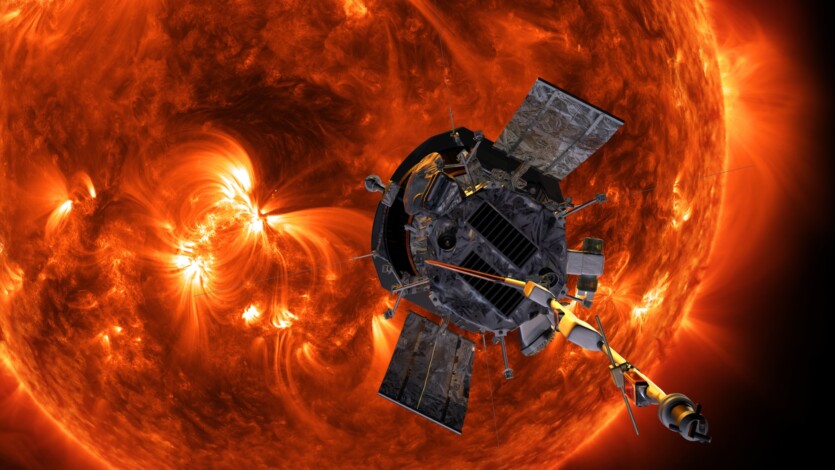
NASA’s Parker Solar Probe has passed through the solar corona and helped astrophysicists answer the long-standing question, of why the outer atmosphere of our star hotter than the surface beneath it.
The results confirmed the existence of the so-called «helicity barrier». This effect seriously affects the mechanism of turbulence energy dissipation when solar wind, which is an unstoppable flow of charged particles and magnetic fields, reaches extraordinary speeds as it moves into space. The helicity barrier prevents the transfer of energy on a small scale and changes the mechanism of fluctuation destruction and heating of the plasma around it.
«This result is striking because by confirming the presence of the «helicity barrier», we can explain previously unexplained properties of the solar wind, including the fact that its protons are typically hotter than electrons. By deepening our understanding of turbulent dissipation, this could have important implications for other systems in astrophysics», — emphasized the study’s lead author from Queen Mary University of London Jack McIntyre.
The researchers also identified the conditions under which the helicity barrier occurs. Scientists have learned that this barrier peaks when the magnetic field strength begins to exceed the pressure in the plasma, and imbalance between plasma waves and the counter-propagating turbulence is increasing.
«This work is important because it provides clear evidence for the presence of a helicity barrier that answers some long-standing questions about coronal heating and solar wind acceleration, such as the temperature signatures observed in the solar atmosphere and the variability of different solar wind fluxes. This allows us to better understand the fundamental physics of turbulent dissipation, the connection between small-scale physics and global heliospheric properties, and to make more accurate space weather forecasts», — said Prof Department of Space Plasma Physics, Queen Mary, University of London, Dr Christopher Chen.
Understanding these processes is not only relevant to the Sun, as many hot diffuse plasma species in the Universe also do not collide with each other. Understanding how energy is dissipated into heat in these environments has broad implications for astrophysics.
The results of the study are published in the journal Physical Review
Source: SciTechDaily

Spelling error report
The following text will be sent to our editors: